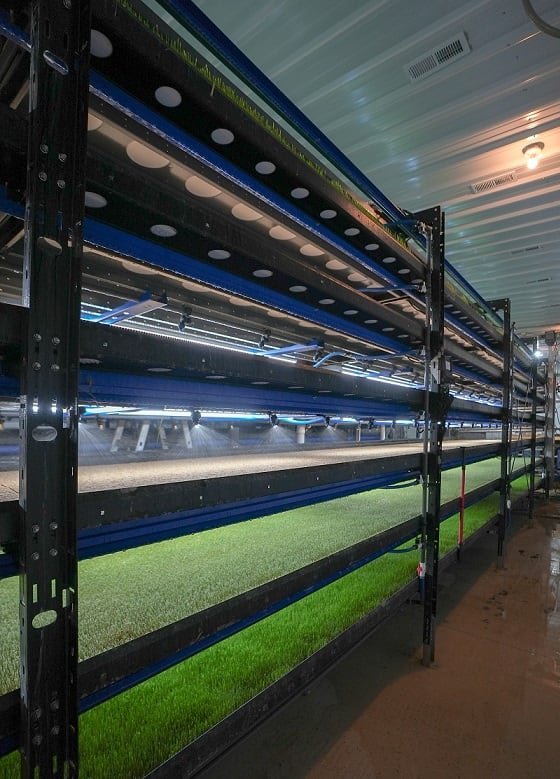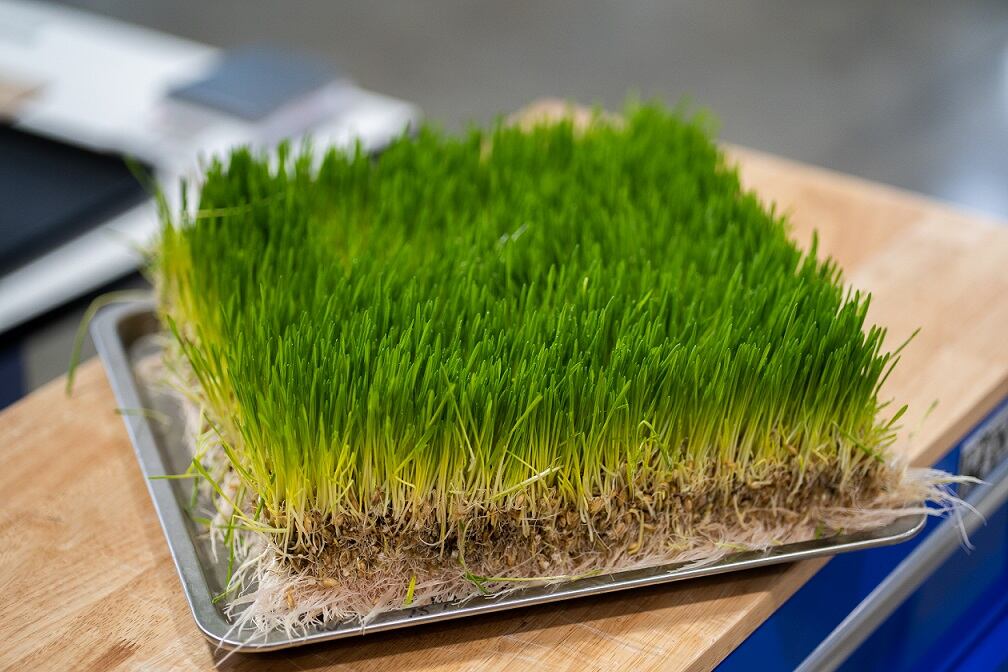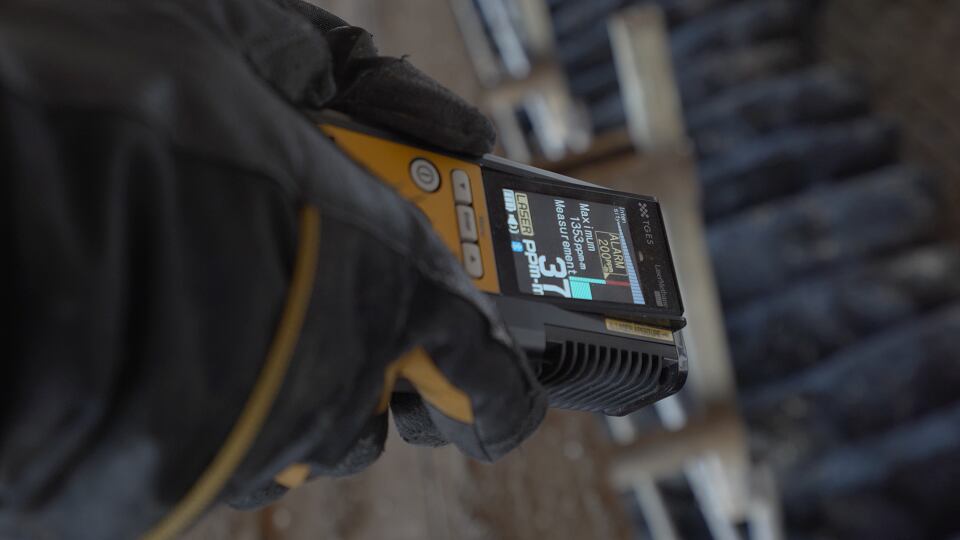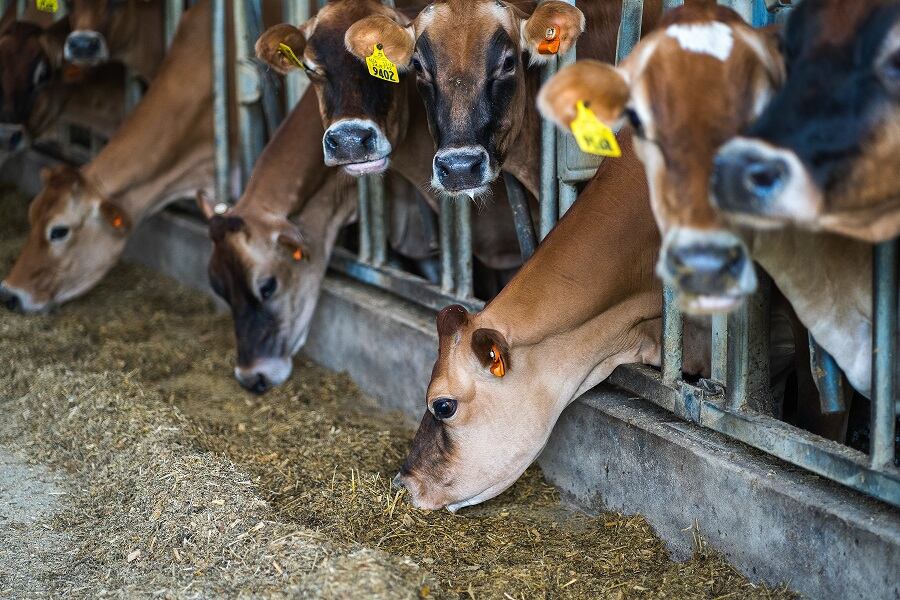HydroGreen's Automated Vertical Pastures (AVPs) technology utilizes a process to sprout grains, such as barley and wheat, in a controlled environment with minimal use of land, labor and water. The fully automated indoor growing technology performs all growing functions including seeding, watering, lighting, harvesting, and re-seeding to deliver fresh forage for livestock without the typical investment in fertilizer, chemicals, fuel, field equipment, and transportation, said the Sioux Falls based feed producer.

Feeding cows the resulting forage significantly reduces methane emissions, said the company, citing new data.
HydroGreen, a division of Canadian agtech group, CubicFarms, is now engaging with Deloitte's advisory team, which has extensive background in carbon management for agriculture and livestock, to further quantify the extent to which its indoor feeding system can deliver carbon insets and offsets.
It outlined how third-parties such as Verra, a Washington, DC-based non-profit organization that manages standards for reducing GHG emissions, improving livelihoods and protecting natural resources, can be used to monetize GHG emission reductions by converting them into tradeable carbon credits.
The market is increasingly receptive to methane emission reduction strategies, and the concept of climate friendly beef and dairy products is really gaining traction. Last year, Mootral, a Swiss-British Agritech firm, announced it was launching the world’s first carbon credits generated from methane emission reductions in cattle, linked to its feed supplement made from garlic extracts - Mootral Ruminant.
Nathan Steeghs, a partner in Deloitte's sustainability and climate change practice, commented: "We need to focus on tech solutions that can help close the emissions gap in getting to net-zero and we believe in investing in solutions that are commercially viable today and technologies that have the potential to unlock significant carbon reductions for future generations."
Also weighing in on the initiative was Yoav Levsky, commercial dairy innovator, chair and partner, Total Dairy Solutions USA: "HydroGreen's new carbon credit program delivers on-farm methane reductions that can be used by companies to effectively meet their urgent net-zero requirements.”
Measuring methane reduction
The reason HydroGreen’s technology can reduce methane emissions is down to the AVP process and growing conditions, which ensure plants go from seed to feed in just six days, using 95% less water and zero pesticides, said the company.

“Growing in an AVP means there is virtually no stress on the plant like there would be in an open field, so metabolic activity in the plant is optimized, releasing more naturally occurring enzymes from the seed which stimulates the production of extra simple sugars in the plant.
“For cows and cattle, these simple sugars, are the easiest to digest. The additional plant enzymes allow the complex carbohydrates in a cow’s diet to easily convert into digestible sugars and result in better health and performance outcomes. When the rumen operates more efficiently because of higher proportions of simple sugars, there are fewer desirable by-products, including methane.”
Trials
Quantification of methane reduction in cows given the hydroponically grown fodder needed to be measured, said the US developer.
HydroGreen researchers in collaboration with Dellait Animal Health and Nutrition designed and conducted two trials, along with analysis of the data, a spokesperson told us.
The trials built upon earlier research findings.
A total of over 200,000 data points were collected and specifically measured from milk production to milk composition to dry matter intake (DMI) to feed efficiency to exhaled methane concentration and production per estimated methane emission, said the representative.
The idea was to determine if adding hydroponically sprouted grains grown in HydroGreen’s AVPs could reduce methane in cows and improve feed efficiency, cow health, nutrition, and performance outcomes.
A trial for dairy cows took place in 2021, over several months, in collaboration with Dellait. "There were ongoing studies of different groups including high-lactation cows, young cows, and fresh and transition cows. During an observational comparison study, 344 jersey cattle averaging 108 days in milk were compared at Crosswind Jerseys Inc, in Elkton, South Dakota, using two contrasting diets balanced for crude protein, metabolizable energy, and fat over a nine-week period. The experimental group received HydroGreen in their feed ration."
Observations showed that including HydroGreen in the ration significantly increases DMI, rumination activity, and nutrient digestibility. The results indicated 24% less methane emissions in dairy cows, said the spokesperson.
"Another beef feeding trial is currently ongoing. Methane concentration is currently being assessed with a hand-held laser gas detector. Preliminary results so far have been promising, showing up to 48% methane reductions in beef cattle, and more results are expected as the trial continues."
Stefan Temperli, the owner of Crosswind Jerseys, said the novel forage increased the fiber digestibility of the ration, boosted intake of the cows and reduced metabolic issues after calving.

Drought insurance
With 365 indoor harvests a year done directly on the farm with a touch of a button, the need for sourcing and transporting forage—usually by rail and truck—is eliminated or reduced, limiting the overall carbon footprint of the farm or ranch, reported HydroGreen in relation to other advantages for its feeding system.
In addition, producers grazing cattle in drought regions have another tool to reduce risk of pasture damage in low forage years.
Occupying only one acre of land, multiple AVPs can free up to 500 acres of farmland, equivalent to 378 football fields, while harvesting 25 million pounds of fresh, high-energy animal feed a year, said the developer.
Water is another resource that is conserved with AVPs.
HydroGreen’s farmer partner, Michael Rigby, Rigby Cattle Company, thinks of AVPs as a form of drought insurance: “The severe drought had us worried we wouldn’t be able to feed our herd. HydroGreen technology allows us to grow our own fresh livestock feed on farm. Our family’s been in the cattle industry for generations, we were considering getting out of the business entirely if we couldn’t get high quality, nutritious feed for our cattle. Having a consistent, predictable feed supply, no matter the weather, is essential for our family farm success.”
Utah-based Grōv Technologies is another US company involved in indoor, fully-automated animal feed production, and it has been establishing a number of partnerships over the past few years, inking a deal with a major Texas dairy operation in September last year.


